
Skellig Michael is a rugged and remote island off the coast of County Kerry, Ireland, a UNESCO World Heritage Site, renowned for its dramatic beauty and ancient monastic settlement. Discover Ireland’s most impressive cliffs on the Skelligs Islands. Landing craft cruises provide access to Skellig Michael, where you can climb steep steps to the monastery ruins and beehive huts. This unique place attracts adventure seekers from all over the world.


Skellig Michael is a rocky Irish island located in the Atlantic Ocean, off the Iveragh Peninsula in County Kerry; About 1 kilometer northeast of Skellig Michael lies the second of the Skellig islands – Little Skellig.
Details:
The Skellig Islands are 12 km (8 mi) off the coast. However, they can be accessed by boat from Portmagee in southwest Kerry. Skellig Michael rises from the sea, reaching a height of 218 meters above sea level. At the top of Skellig Michael is a well-preserved 6th-century monastic settlement.
How to get to the island?
Boats depart Portmagee Marina daily around 10:00 pm weather permitting. The boat ride to Skelligs takes 45 minutes. The boats stop briefly at Little Skelligs so you can see the bird colony and seals. The round trip boat ride takes another 45 minutes and returns you to Portmagee.
Stairs leading to the monastery
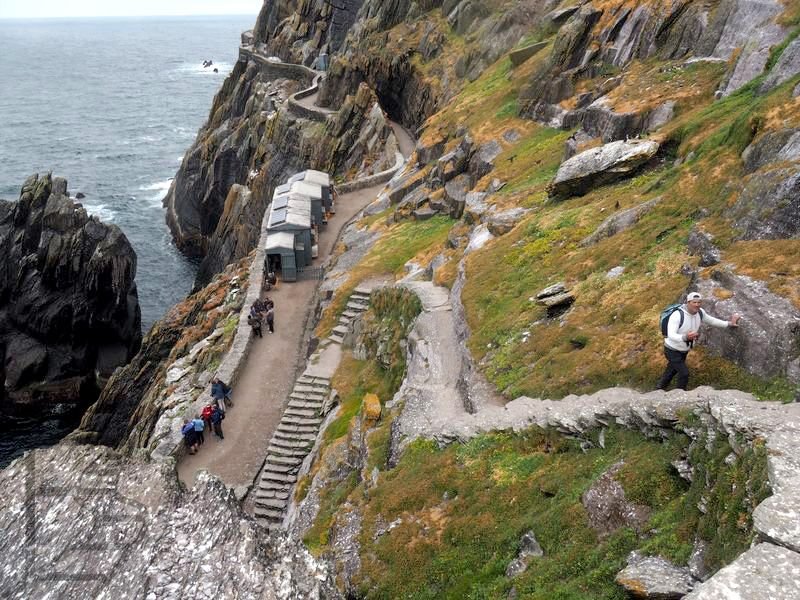
Before entering the monastery, we will go on an expedition – climb 618 stairs to a height of over 180 meters. This is a demanding climb and anyone with health issues should carefully consider their physical limitations before exploring this area. Visitors are advised to bring water and protective clothing.
Monastery
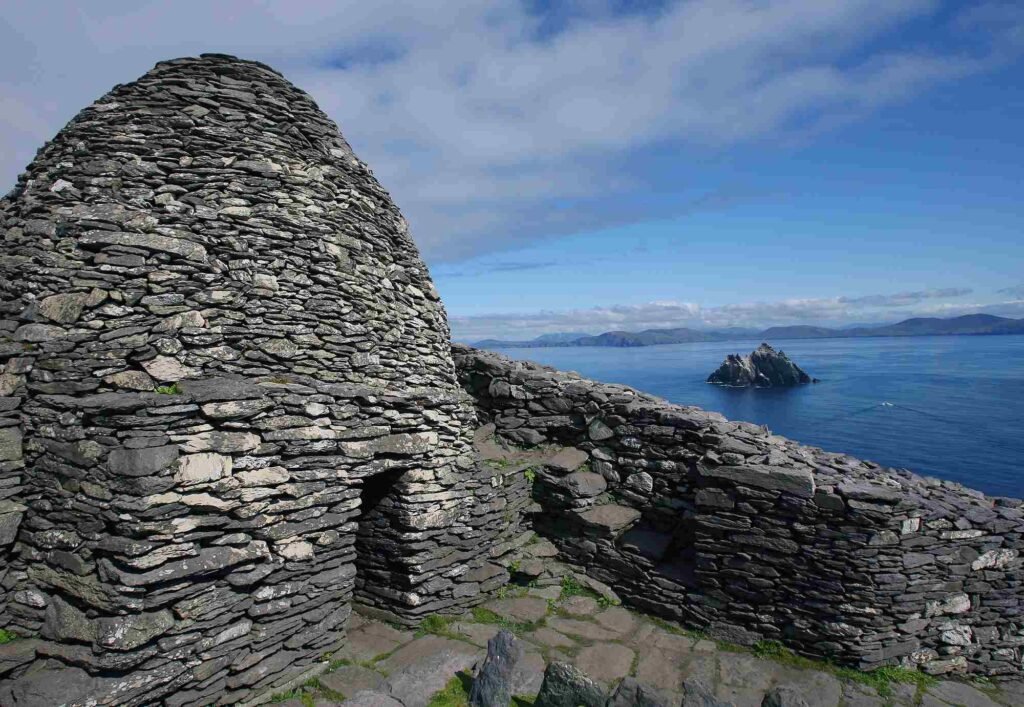
The monastery is built into a terraced shelf 180 m (600 ft) above sea level. It contains two oratories, a cemetery, crosses, cross-slabs, six clochán-type domed beehive cells (of which one has fallen) and a medieval church. The cells and oratories are all of dry-built corbel construction, whereas the church, which was constructed at a later date, is of mortared stone.
Cece
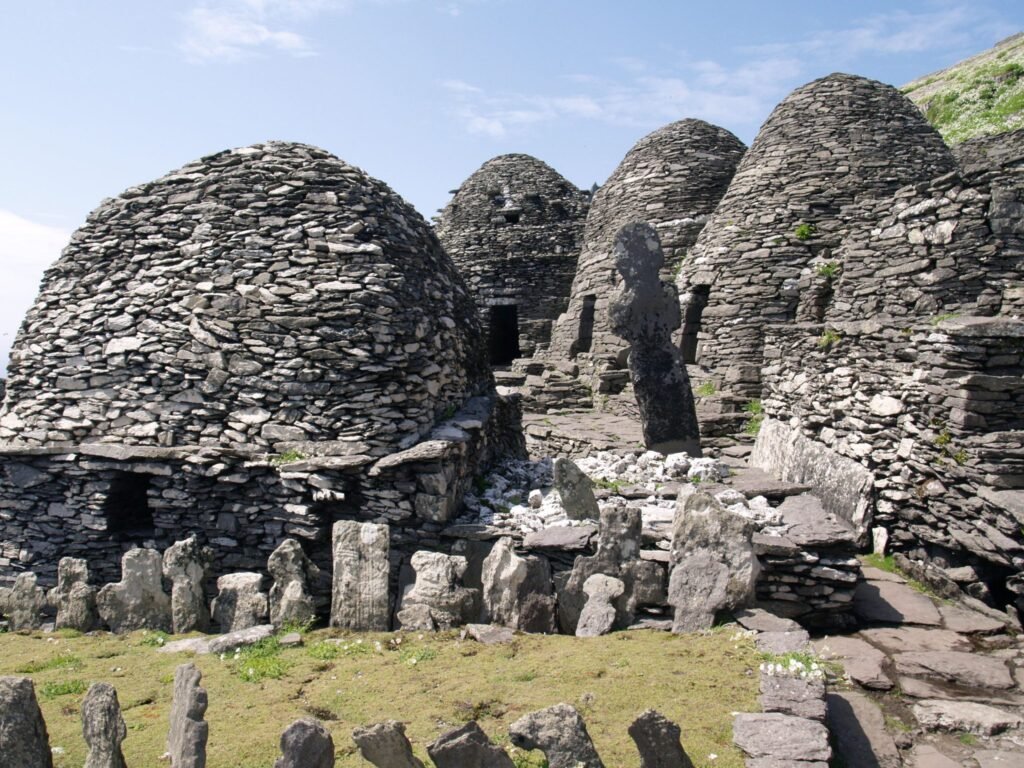
The largest hut, known as cell A, has a floor area of 14.5 × 3.8 metres, and is 5 metres high. Like the other huts, its internal walls are straight before narrowing to accommodate its dome roof. Protruding stones in the interior, acting as pegs, are placed at about 2.5 metres to support the roof, and in some instances may have supported upstairs living quarters. Protruding stones on the exterior most likely acted as anchors for thatch roofing. Some cells contain recesses that may have been formed to contain cupboards.
Monk’s Graveyard
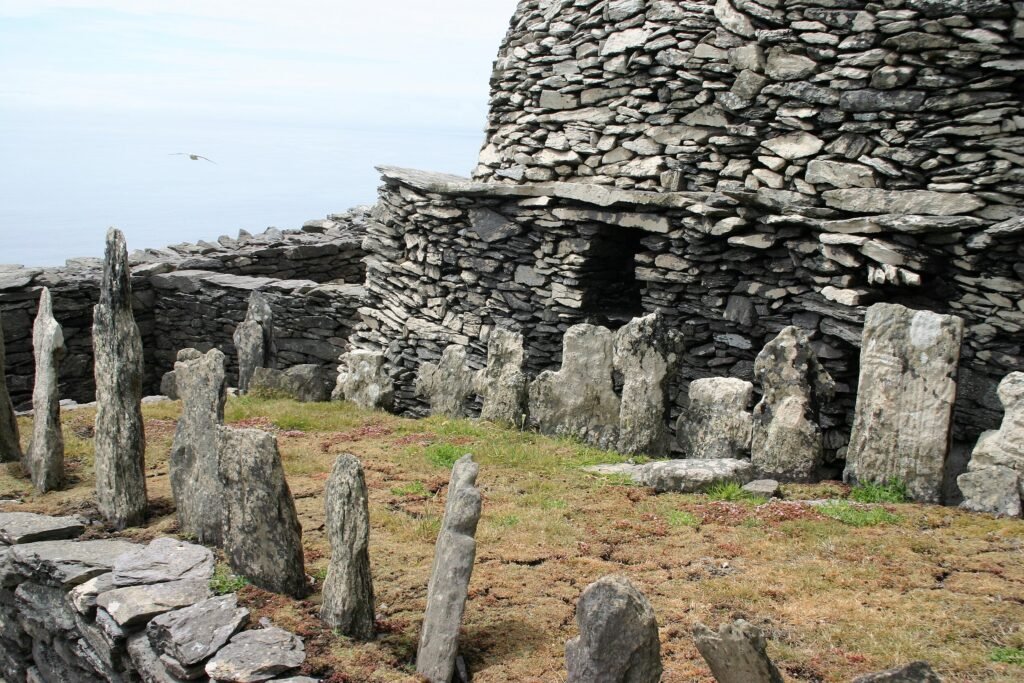
The Monk’s Graveyard is partially collapsed and smaller than when it was in active use. It contains stone crosses with mostly plain inscribed decorative patterns on its west side, two of which are highly detailed and believed to be early features of the site; in total over a hundred individual stone crosses have been found on the island.
Star Wars
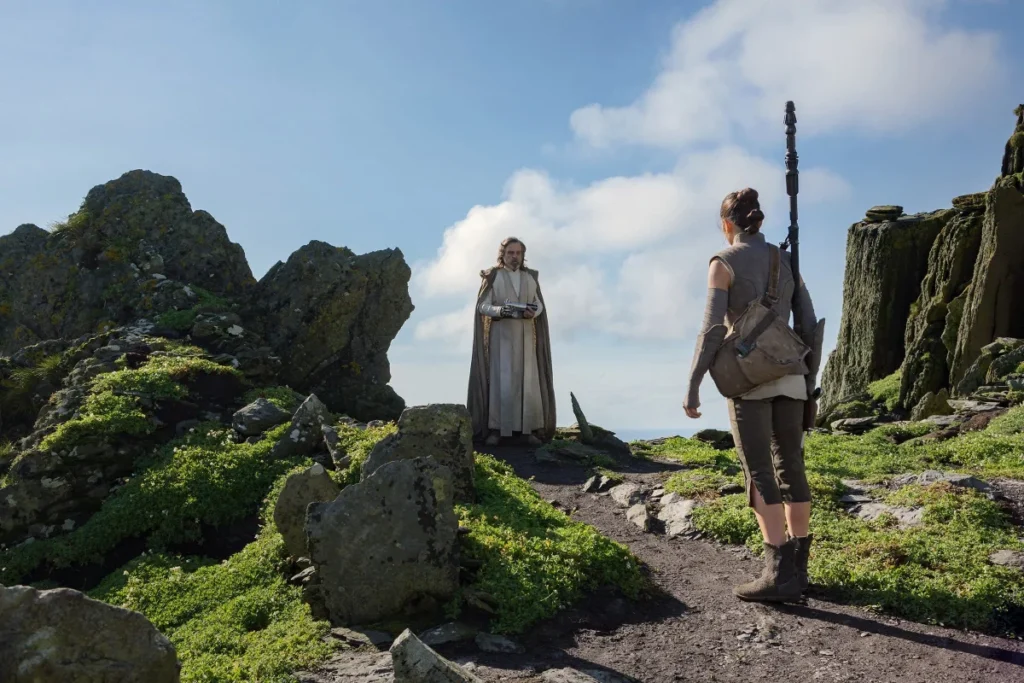
The remote island was once home to monks, who lived a life of necessary self sufficiency, solitude and prayer. Designated a UNESCO World Heritage Site in 1996 and recently made even more famous through the Irish government’s decision to allow Disney to film Star Wars there, the site has been in use since the foundation of a monastery by Augustinians in the early medieval period.
The unique location, its evocative representation of the purity of Celtic Catholicism and its proximity to the picturesque Atlantic views of Kerry have all contributed to Skellig Michael becoming the most precious of all of the treasures of the Irish faith.
